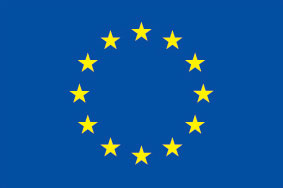The Philippine pork sector continues to face a complex mix of recovery efforts, volatile prices, and strong import demand as African swine fever (ASF) and economic pressures shape production and trade. While local output shows signs of gradual recovery, persistent supply shortages and policy uncertainty continue to drive reliance on imported pork, making the country one of Southeast Asia’s most dynamic destinations for global meat exporters.
Pork production in the Philippines is forecast to rise by around 2% in 2026 to 980,000 tons, following years of contraction caused by ASF outbreaks that cut the national swine herd from over 13 million heads in 2019 to around 8 million today.[1] Although biosecurity measures, vaccine rollout, and herd restocking have improved, recovery remains slow, particularly among smallholder farmers who account for most of the country’s production.
The Department of Agriculture (DA) continues to promote ASF vaccination (using the Vietnamese AVAC vaccine) and provide breeding stock to affected regions. However, outbreaks during 2024 and 2025 hindered a faster rebound. Farm productivity remains constrained by animal health issues, high feed costs, and poor infrastructure.[2]
To alleviate sector pressures, the DA and local hog producers recently agreed to set a minimum farmgate price of PHP 210 (3.08EUR) per kilo for live hogs, after values had fallen to as low as PHP 150–180 (2.20EUR–2.64EUR). Agriculture Secretary Francisco Tiu Laurel Jr. also announced plans to reintroduce a price cap on pork cuts to shield consumers and limit retail markups, after previous maximum suggested retail prices (MSRP) were lifted due to low compliance.[3]
Despite official support for local producers, imports remain essential to meet growing demand. According to the Bureau of Animal Industry, the Philippines imported over 1 million metric tons of meat between January and August 2025, a 17% year-on-year increase. Pork accounted for more than half of the total, with shipments rising 27% to over 570,000 tons. Brazil has consolidated its position as the country’s leading pork supplier, accounting for more than half of total imports in the first half of 2025, thanks to its competitive prices and broad market access. The EU, the US, and Canada remain key suppliers,[4] while Russia may also enter the market soon but will face tough competition from established players.[5]
Under the extended tariff reductions valid until 2028, most-favoured-nation (MFN) rates for pork remain at 15% for in-quota imports and 25% for out-quota shipments, helping sustain trade flows and maintain price competitiveness.[6] However, the DA is now considering restoring the pork import tariff to 40%, reversing the current 25% rate established under Executive Order No. 62. In addition, the government is seeking to reclassify pork jowls—a cut popular in Korean barbecue—from “offal” to a higher-tariff category, reflecting its growing demand among meat processors.
Consumption, projected to grow by 4% in 2026 to 1.73 million tons, continues to outpace production. With a population nearing 122 million and stable economic growth, pork remains the preferred animal protein for most Filipino households. The rainy season and persistent ASF challenges have further constrained local supply, pushing retail prices.[7] As local output remains insufficient, imports will continue to fill the gap. Forecasts indicate that pork imports could reach 750,000 tons in 2026, close to the country’s record level.
Philippine consumers show strong preference for traditional cuts such as liempo (pork belly), kasim (shoulder/ham), and pigue (leg), as well as for offal and bones used in soups and stews. However, evolving consumption habits and the influence of Chinese cuisine are shaping new opportunities for exporters. The Philippine pork sector is unlikely to regain self-sufficiency in the near term. Despite the government’s initiatives and moderate production growth, imports will remain the backbone of supply. Looking ahead, the Philippines’ pork import demand is expected to remain strong, supported by expanding cold storage capacity, and rising purchasing power. However, ongoing discussions about reinstating higher tariff rates to protect local producers could partially offset these gains.
For EU exporters, opportunities exist in value-driven segments and niche cuts where competition is less intense, and local production cannot match the required quality or specifications. As the market continues to evolve, aligning supply with Filipino consumption patterns (while closely monitoring policy changes) will be key to maintaining competitiveness in one of Southeast Asia’s most dynamic pork markets.
[1] Monzon, A. (October 11, 2025). Return of pork price cap eyed as costs rise. Philstar Global.
[2] Kazumi Ipac, J., & Rochet Jateng, H. (September 19, 2025). Livestock and Products Annual. Report No: RP2025-0038. USDA, Foreign Agricultural Service.
[3] DA Press Office (November 4, 2025). DA, hog farmers set pork floor price at P210 per kilo.
[4] Barro II, D. (November 4, 2025). Philippine meat imports surge 17% on lower tariffs. Manila Bulletin.
[5] Interfax (August 11, 2025). Russian pork exports to Philippines may begin this year, but face tough competition – industry association head.
[6] PorciNews (October 1, 2025). Philippine pork imports seen up in 2026 as local supply recovers.
[7] PorciNews (September 4, 2025). Philippine pork prices set to rise in coming months.




